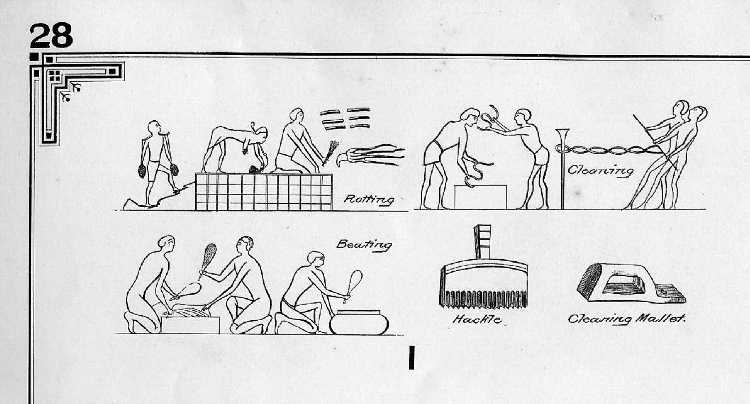
EGYPT: 1500BC

This is from an extremely rare and very large (nearly poster sized) 1892 steel engraved print illustrating developments over time in the history of hemp and flax processors. The engraving was done by Sackett & Wilhelms of New York. The engraving was taken from a very rare volume published in 1892 by The Commissioner of Patents and titled "The Growth of Industrial Art."
TEXT ON THIS POSTER INCLUDES:
Hemp is not mentioned in our translation of the Hebrew, and but sparingly in the Greek classics. The Thracians made garments of hemp, which closely resembled linen. The Greeks and Romans used hemp, but never cultivated it before the Christian era. Cloth, made of hemp, became common in Europe in the thirteenth century.
In Virginia, United States, hemp was raised previous to 1648. In 1657 its culture was encouraged by the Government.
To separate the fibre, the hemp is dew-rotted or water-rotted. In the former process, the hemp is spread upon the ground in October, or a month or two later, according to the climate; when the lint readily separates upon breaking a stalk, the process, which requires about two months, is complete. In water-rotting, the hemp is immersed in water for ten days or more, according to the season. This is done is streams, in artificial pools made near the margin of a river, or in large wooden vats under cover. When rotted in vats the hemp is subjected to a partial breaking, which lessens its bulk. After the hemp is rotted and dried it is taken to the brake, which is either a rude affair worked like a flax brake, or an improved machine operated by steam, or other power. After breaking the hemp is twisted into bundles and baled for market.
The principal hemp producing countries are Russia, Italy, Holland, Turkey, Great Britain, the East Indies, and the United States
|
|
|
|
|
|
|
|
|
|
|
|
|
|
|